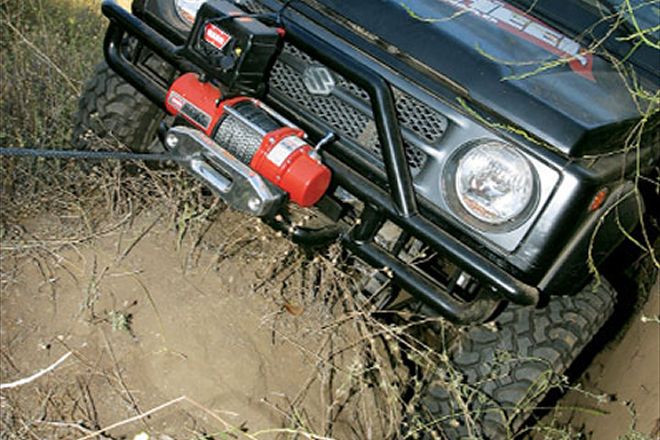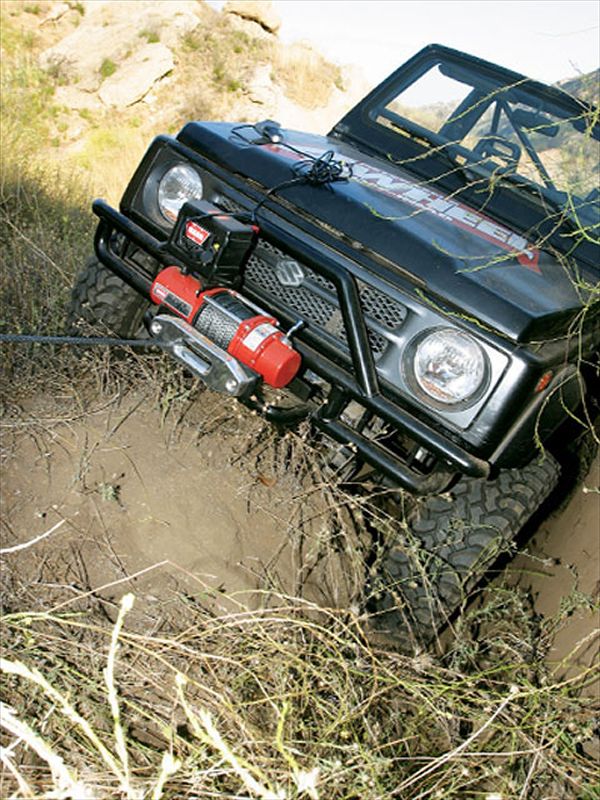
 Fred Williams
Brand Manager, Petersen’s 4Wheel & Off Road
Photographers:
Warn IndustriesLeah Light
Fred Williams
Brand Manager, Petersen’s 4Wheel & Off Road
Photographers:
Warn IndustriesLeah Light
One benefit of competition motorsports is how it pushes the technology which eventually trickles down to everyday four-wheelers, and the Warn 9.0Rc winch is a perfect example.

In the rockcrawling comp scene, folks are constantly hunting for smaller and lighter components, which is great for single-use tube buggies, but doesn't always apply to your average trail vehicle. Unless, of course, you drive something like a flatfender Jeep or Suzuki. We decided that this compact 54-pound winch would be the perfect addition to our Samurai project truck, seeing as the 1.3L four-cylinder engine isn't exactly a powerhouse. Since it's small enough to get into places it shouldn't be, but still runs open differentials, extrication help is often needed.
The Warn 9.0Rc carries all the benefits of a larger 9,000-pound capacity winch, but has been repackaged for weight and fitment efficiencies. We installed it on a Trail Tough front bumper in under two hours, and were stuck in a rut about an hour later (the little Suzuki motor makes just getting to the trail head a slow drive). This is the first winch that Warn has ever offered with 3/8-inch synthetic rope, which offers a ton of benefits versus steel cable, especially in weight. In addition this winch comes with the new remote controller that Warn will be implementing into many new winches.
If you are building a competition buggy or more likely just assembling a lightweight trail rig, this Warn winch offers a big punch in a small package.







